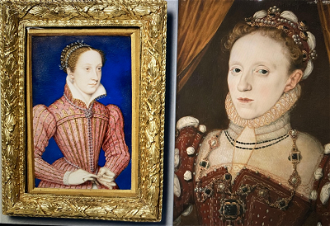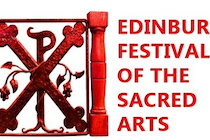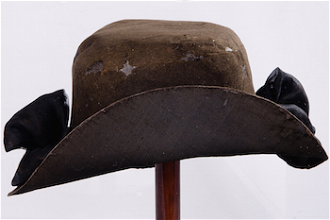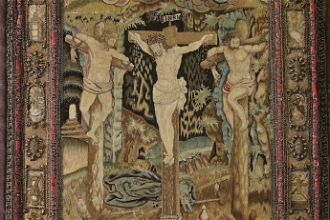Exhibition: Mary and Elizabeth - royal cousins, rival Queens + video

Mary, Queen of Scots and Elizabeth I
The British Library has brought more than a touch of drama to their new exhibition about Mary, Queen of Scots and Elizabeth I. Probably the most celebrated and charismatic of queens, this is the first time a joint study has been made of them both together.
Setting the scene are 3D monochrome images of castles, cathedrals and places associated with the two monarchs' history, projected onto display backdrops and red drapes. Voice overs are summoned up at the wave of a hand over audio buttons and actor Juliet Stevenson delivers words of Queen Elizabeth authoritatively. Amy Brown-Botes speaks movingly with a French accent, rendering the Scottish Queens' words to great effect.
An extraordinary array of documents, texts, portraits, and scintillating artefacts are displayed. Enthrallingly we are drawn into this real life drama as it was played out on the world's stage five centuries ago and continues to captivate us today.
United by ties of blood and femininity and considered divinely appointed sovereigns in a masculine world, these two powerful women never met but vividly come to life through their correspondence, state papers and portraiture. The exhibition traces their intertwined lives in a dramatic, exposition of power politics and espionage, more intriguing than the fictional plays, films and operas that have speculated about them.
Both were descended from Henry VII. His eldest daughter, Margaret Tudor, married James 1V of Scotland whose son, James V married Marie de Guise, Mary's mother. His son Henry's second marriage to Ann Boleyn produced Elizabeth. The many parallels of the cousin's lives are highlighted in this stirring exhibition.
Mary became Queen at six days old but was sent to France to be educated and betrothed to the Dauphin. Her mother became Regent of Scotland. A charming letter Mary wrote to her anticipates her forthcoming First Holy Communion.
Whereas Elizabeth declined to wed, her cousin married three times and bore a son, James, who eventually united both kingdoms. Elizabeth tried to influence Mary's choice of husband following her return to Scotland after the young French kings' death, even positioning her favourite Robert Dudley as a suitor. Mary's disastrous choice of Lord Darnley, a cousin with a claim to the English throne, caused tensions in their complex relationship. His subsequent murder and her marriage to Lord Bothwell, a suspect in his death, caused civil war in Scotland and led to her deposition. Trying to engage Elizabeth's support, Mary reminds her that they were "both of one blood, one country and one isle."
Featured is Elizabeth's first letter to Robert Cecil aged fourteen. Their relationship became key to the statecraft of her reign and saw a complex network of spycraft under Francis Walsingham that ultimately resulted in May's entrapment and downfall.
Displayed is Mary's first letter written in English, after she fled to England, to Sir Francis Knollys who later is a signatory on her featured death warrant .
Highlights include the Marian Hanging, a remarkably well preserved tapestry embroidered by Mary during her English incarceration bearing intricate motifs; and Elizabeth's mother-of-pearl jewelled ring enclosing miniatures of herself and her mother, Anne Boleyn. There is also an embroidered cover she made for a copy of Katherine Parr's prayer book that she translated herself into English for her father, Henry VIII.
Other poignant treasures are the medieval head of Scotland's patron saint - all that remains of the statue from St Andrew's Cathedral following the Reformations' iconaclysm and Jesuit martyr, St. Edmund Campion's Bragge - his defence of Roman Catholicism.
Significant portraiture includes a recently discovered striking image, attributed to George Gower, of Elizabeth aged 34, and probably the most realistic depiction of her. A stunning miniature of Mary by François Clouet , (c 1560-61) depicts her when married to Francis II.
The night before her execution Mary wrote to her cousin Henry III of France at 2am, enclosing a sonnet only recently discovered at the Bodleian library. The words in her own hand are beamed on scarlet drapes and spoken soulfully, concluding.
"... And to wish for an end to my calamity
I may have a share in everlasting joy."
The sonnet is displayed alongside jewels she bequeathed to friends and bear miniature portraits of herself.
In death the two queen's lie side by side in Henry VII's chapel in Westminster Abbey Their tomb effigies are recreated in a moving finale with The Sixteen's rendition of Thomas Tallis', O Nata Lux,1575, providing a poignant backdrop. King James reluctantly paid for Elizabeth's tomb. It is slightly smaller than his mothers' which was costlier and more impressive, constructed to contain her remains when exhumed from Peterborough Abbey. Elizabeth wizened and aged holds regal emblems: Mary, hands held devoutly in prayer, is serenely timeless.
An epilogue features the Armada illustrated by correspondence, maps and the Queen's Tilbury speech. An elaborate drawing depicts Elizabeth's lengthy funeral procession in 1603. King James' books on the Divine Right of Kings conclude this stunning exhibition.
A lavishly illustrated catalogue gives superb in depth analysis by selected curatorial historians, priced £30.
Until 20 February 2022. Tickets £16. Concessions available.
VIDEO LINK
Mary and Elizabeth - royal cousins, rival Queens - https://vimeo.com/844557115/29fdb11347?utm_campaign=1444193_August_OneBL_20230825&utm_medium=email&utm_source=The%20British%20Library


















